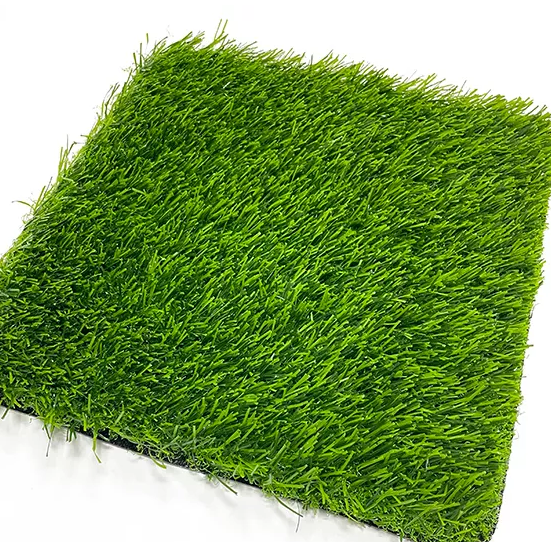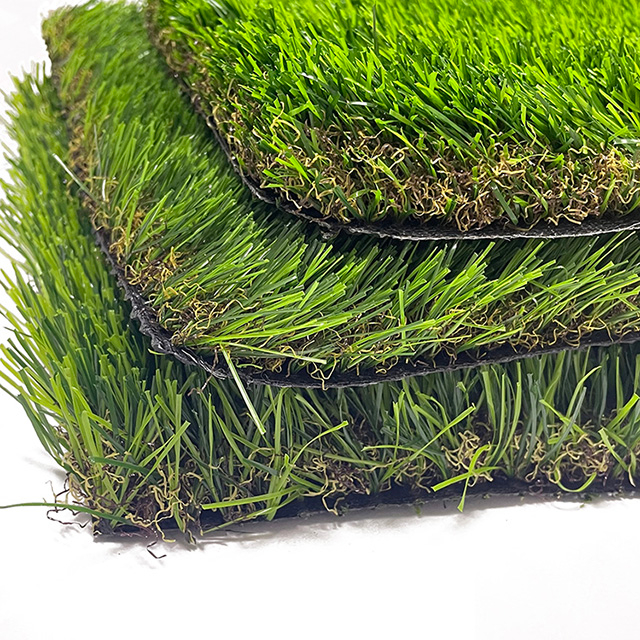
Ever wondered why artificial grass feels hotter than natural grass? Artificial grass, made from synthetic materials, lacks the cooling effect of natural grass. This article explores why artificial grass gets hot, the factors influencing its temperature, and solutions to keep it cool. You'll learn about material composition, design impacts, and cooling technologies. Understanding these aspects helps you make informed decisions about artificial grass options.
Does Artificial Grass Get Hot?
Artificial grass does get hot, especially under direct sunlight, but how hot it gets depends on several factors compared to natural grass.
Comparison with Natural Grass
Natural grass stays cooler than artificial grass because it contains moisture and cools itself through a process called transpiration—like sweating for plants. This natural cooling effect means real grass rarely gets uncomfortably hot, even on sunny days.
Artificial grass, made of synthetic fibers, lacks this moisture and cooling ability. It absorbs sunlight and heat more readily, causing surface temperatures to rise higher than natural grass. For example, studies have shown artificial turf can reach temperatures over 150°F (65°C) on hot days, while natural grass remains around 90-95°F (32-35°C). However, artificial grass usually doesn’t get as hot as materials like asphalt or concrete.
Factors Influencing Heat Absorption
Several factors affect how hot artificial grass becomes:
● Material type: Different fibers like nylon, polypropylene, or polyethylene absorb and retain heat differently. Nylon tends to have a higher melting point and may stay cooler.
● Color: Darker turf absorbs more heat. Light green or tan shades reflect more sunlight and stay cooler.
● Blade shape: Turf blades with hollow or three-dimensional shapes allow better airflow, reducing heat buildup.
● Density and face weight: Denser turf with heavy fibers traps more heat compared to lighter, less compact turf.
● Infill material: Some infills like crumb rubber absorb and hold heat, increasing surface temperature. Alternatives like silica sand or cork infill help keep turf cooler.
● Installation: Proper ground preparation and drainage improve airflow beneath turf, reducing heat retention.
Studies and Findings on Temperature
Research from the University of Maryland (2010) compared temperatures of natural grass, artificial turf, and parking lots on a 100°F day. Natural grass was about 94°F, artificial grass hit 157°F, and parking lots reached 140°F. This indicates artificial turf can get hotter than natural grass but still less hot than many hard surfaces.
More recent turf products use cooling technology to reduce heat absorption. For example, CoolFlo technology creates hollow fibers that increase airflow and reflect sunlight, lowering surface temperature by 10-20%. These advances mean modern artificial grass is cooler than older versions.
Why Is Artificial Grass Hotter Than Real Grass?
Artificial grass heats up more than real grass mainly because of how it's made and how it interacts with water.
Material Composition of Artificial Grass
Artificial grass is made from synthetic materials like polyethylene, polypropylene, and nylon. These plastics absorb sunlight and heat more quickly than natural grass. Unlike natural grass, which contains water and organic matter, synthetic fibers trap heat instead of cooling down. For example, nylon has a higher melting point and better heat resistance, but it still gets warmer than natural grass under the sun.
Role of Synthetic Fibers
The synthetic fibers in artificial grass don't breathe or release moisture. Real grass cools itself through transpiration, releasing water vapor that lowers its surface temperature. Artificial grass lacks this process. Its fibers absorb sunlight and convert it into heat, causing surface temperatures to rise sharply. This is why artificial grass can feel like walking on a hot pavement on sunny days.
Impact of Water Absorption
Natural grass holds moisture in its blades and soil, which helps keep it cool. Water evaporates from the surface, cooling the air around it. Artificial grass, however, cannot absorb water. Instead, it dries quickly, losing the cooling effect that moisture provides. This lack of water retention means artificial grass heats up faster and stays hot longer after the sun sets.
How Does Design Affect Artificial Grass Temperature?
The design of artificial grass plays a big role in how hot it gets under the sun. Several key factors influence its temperature, including color, blade shape, and density.
Color and Its Impact on Heat
Color is one of the most obvious influences on how hot artificial grass becomes. Darker shades absorb more sunlight and heat, making the surface hotter. For example, deep greens or browns soak up more solar energy, causing the turf to warm up quickly.
On the other hand, lighter colors like pale green or tan reflect more sunlight, keeping the surface cooler. Choosing a lighter shade can reduce the temperature by a noticeable margin, making the turf more comfortable on hot days.
Blade Shape and Airflow
The shape of the grass blades affects airflow, which helps cool the surface. Flat and wide blades tend to trap heat because they block airflow and absorb more sunlight.
Artificial grass with hollow, curled, or three-dimensional blades allows air to circulate better. This airflow carries heat away, lowering the surface temperature. For example, blades designed with a hollow core can reduce heat buildup by increasing ventilation among fibers.
Density and Face Weight Considerations
Density refers to how closely packed the grass blades are. Denser turf traps more heat since less air can flow between the fibers. For instance, putting green turf, which is very dense, often feels hotter than less compact lawn turf.
Face weight means the weight of the synthetic fibers per square yard, excluding the backing. Generally, turf with a heavier face weight has more fibers and can hold more heat. However, this is not always the case; some dense turfs with lighter fibers may heat up less.
Selecting turf with moderate density and face weight can help reduce heat retention while still providing a lush appearance.
![Artificial Grass Artificial Grass]()
Can Artificial Grass Melt in the Sun?
Artificial grass melting under the sun is a common concern, but it’s very unlikely if you have the right product and installation.
Melting Points of Synthetic Materials
Artificial grass is made from synthetic fibers like polyethylene, polypropylene, and nylon. These materials have high melting points:
● Polyethylene melts around 220°F (104°C)
● Polypropylene melts near 320°F (160°C)
● Nylon melts between 428°F and 572°F (220°C to 300°C)
Since outdoor temperatures rarely reach these levels—even on the hottest days—artificial grass won’t melt just from sunlight exposure.
Common Causes of Melting
If artificial grass melts, it's usually due to factors other than direct sun:
● Reflected heat from windows or glass doors: Sunlight bouncing off shiny surfaces can focus intense heat on small spots, causing damage.
● Proximity to heat sources: Barbecue grills, fire pits, or open flames near turf can cause melting.
● Improper installation: Lack of airflow beneath the turf or poor drainage can trap heat, increasing risk.
● Use of low-quality materials: Cheaper turf may have lower heat tolerance and degrade faster.
Preventive Measures
You can avoid melting problems by following a few key steps:
● Choose high-quality turf: Select products made from heat-resistant fibers and UV-stabilized yarns.
● Professional installation: Ensure proper ground preparation for drainage and airflow, reducing heat buildup.
● Avoid placing turf near heat sources: Keep grills, fire pits, and reflective surfaces away from your artificial lawn.
● Use shading: Install shade sails, umbrellas, or plant trees to reduce direct sun exposure.
● Regular maintenance: Check turf for signs of wear or damage and address issues promptly.
How to Keep Artificial Grass Cool in Summer?
Artificial grass can get hot under the summer sun, but many ways exist to keep it cooler and comfortable. Here's how to manage heat and enjoy your turf even on the hottest days.
Selecting High-Quality Grass with Cooling Technology
Choosing the right artificial grass matters. Premium products often have built-in cooling technology. These grasses feature fibers designed to reflect sunlight and increase airflow. For example, some use hollow or three-dimensional yarn shapes that help lower surface temperature by 10-20%. Investing in high-quality turf pays off: it stays cooler, looks more natural, and lasts longer.
Professional Installation Benefits
Proper installation can reduce heat buildup. Experts prepare the ground to ensure good drainage and airflow beneath the turf. This prevents heat from getting trapped underneath. Professionals can also help avoid glare from nearby windows or reflective surfaces, which can cause localized hot spots. A well-installed lawn feels cooler and performs better over time.
Infill Choices: Avoiding Crumb Rubber
Infill plays a key role in turf temperature. Crumb rubber, common in sports fields, absorbs and holds heat, making the surface hotter. For residential lawns or pet areas, alternatives like silica sand, cork, or specialized cooling infills are better. These materials reflect sunlight and release heat more efficiently. Some cooling infills activate when sprayed with water, lowering temperature further.
Creating Shaded Areas
Shade reduces direct sunlight on turf, keeping it cooler. Natural shade from trees or shrubs works well but takes time to grow. You can also add shade sails, pergolas, or umbrellas for immediate relief. These options not only cool your lawn but also create inviting outdoor spaces to relax during summer.
Using Water to Cool Down Turf
Spraying artificial grass with water during peak heat hours quickly cools the surface. Since synthetic turf dries fast, watering won’t harm it or cause mud. Light misting can lower surface temperature by up to 50°F temporarily. This is an easy, effective way to make your lawn comfortable for kids, pets, and barefoot walking on hot days.
Tip: Choose premium artificial grass with cooling fibers, avoid crumb rubber infill, and add shade or water misting to keep your turf comfortable in summer heat.
Conclusion
Artificial grass does heat up under the sun, but factors like material, color, and design influence its temperature. While it gets hotter than real grass, advancements in cooling technology make it more comfortable. High-quality artificial grass, like those from Qingdao XiHY Artificial grass, offers cooling features and proper installation to reduce heat buildup. Their products provide a comfortable and durable solution for outdoor spaces. Consider artificial grass options for a practical and attractive lawn, even in hot climates.
FAQ
Q: Does artificial grass get hotter than natural grass?
A: Yes, artificial grass gets hotter than natural grass due to its synthetic fibers, which absorb and retain heat more readily than the moisture-rich blades of real grass.
Q: How can I keep artificial grass cool in summer?
A: You can keep artificial grass cool by selecting turf with cooling technology, using shade structures, applying water misting, and opting for infill materials that don't retain heat.
Q: Is artificial grass safe for dogs during hot weather?
A: Artificial grass is generally safe for dogs, but it can get warm. Use cooling methods like watering or providing shade to keep it comfortable for pets.
Q: Can artificial grass melt under direct sunlight?
A: Artificial grass is unlikely to melt from sunlight alone, as it is made from materials with high melting points. However, avoid exposure to reflected heat from windows or nearby heat sources.








